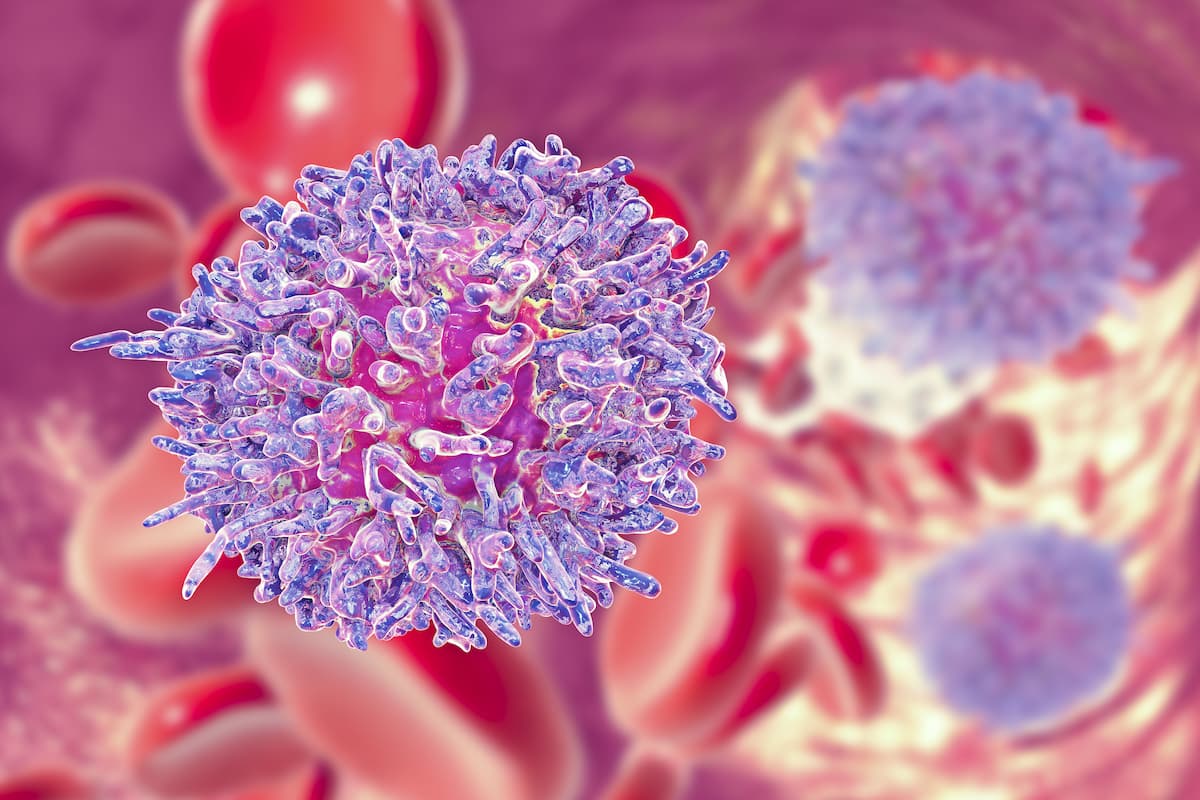FDA Updates Fludarabine Phosphate Labeling in Chronic Lymphocytic Leukemia
The updated labeling also includes new information on the recommended dosage of fludarabine phosphate when given with cyclophosphamide and rituximab.
With the updated labeling, fludarabine phosphate is now indicated for use as part of a combination regimen for adult patients with B-cell CLL and among adults with B-cell CLL with a lack of response or disease progression on treatment with 1 or more regimens containing an alkylating agent.

The FDA has approved updated labelling for fludarabine phosphate injection for patients with chronic lymphocytic leukemia (CLL) as part of Project Renewal, according to a news release from the agency.1
With the updated labeling, fludarabine phosphate is now indicated for use as part of a combination regimen for adult patients with B-cell CLL and among adults with B-cell CLL with a lack of response or disease progression on treatment with 1 or more regimens containing an alkylating agent. The revised labeling also highlights new information on the recommended dosage of fludarabine phosphate when administered in combination with cyclophosphamide and rituximab (Rituxan).
When administered with cyclophosphamide/rituximab, the recommended dose for fludarabine phosphate is 25 mg/m2 intravenously over 30 minutes daily for days 1 to 3 for six 28-day cycles plus cyclophosphamide at 250 mg/m2 intravenously daily on days 1 to 3 and rituximab at 375 mg/m2 intravenously on day 1 of cycle 1 followed by 500 mg/m2 on day 1 of each cycle thereafter.2 For use as single-agent therapy, the recommended dose for fludarabine phosphate is 25 mg/m2 intravenously for 5 consecutive days of each 28-day cycle.
The prescribing information for fludarabine phosphate contains no contraindications. Additionally, the labelling includes warnings and precautions for neurological toxicities, myelosuppression, autoimmune cytopenias, transfusion-related graft-vs-host disease, and tumor lysis syndromes, among others. The prescribing information also details a warning for pulmonary toxicity in patients with CLL when fludarabine phosphate is administered in combination with pentostatin (Nipent).
Common adverse effects (AEs) associated with the therapy include myelosuppression, fever, infection, nausea, vomiting, weakness, and pain.
Investigators previously evaluated the efficacy of single-agent fludarabine phosphate as part of 2 single-arm open-label studies among patients with CLL and refractory disease following 1 or more prior lines of alkylating agent–containing regimens. One study was conducted at MD Anderson Cancer Center, and the other was conducted by the SWOG Cancer Research Network.
Treatment with fludarabine phosphate produced an overall response rate (ORR) of 48% in the MD Anderson study and 32% in the SWOG trial; the complete response rate was 13% in each study. In the MD Anderson and SWOG trials, respectively, 35% and 19% of patients experienced a partial response.
Data showed a median time to response of 7 weeks (range, 1-68) in the MD Anderson study and 21 weeks (range, 1-53) in the SWOG trial. Additionally, the median duration of disease control was 91 weeks and 65 weeks in each respective trial. Treatment also yielded a median survival of 43 weeks and 52 weeks, respectively.
In the MD Anderson trial, 48 patients with CLL received fludarabine phosphate at 22 mg/m2 to 40 mg/m2 for 5 days as part of every 28-day cycle. In the SWOG trial, 31 patients received the agent at 15 mg/m2 to 25 mg/m2 for 5 days in each 28-day cycle.
Among patients with Rai stage III or IV disease at baseline, the disease improved to stage II or better among 58% (n = 7/12) of those with a response in the MD Anderson trial and 71% (n = 5/7) of patients who responded in the SWOG trial. Across both studies, the mean hemoglobin concentration increased from 9.0 g/dL at baseline to 11.8 g/dL at the time of response in a subgroup of patients with anemia. Among a subgroup of patients with thrombocytopenia at baseline, the average platelet count changed from 63,500/mm3 at baseline to 103,300/mm3 at the time of response.
References
- FDA approves updated drug labeling for fludarabine phosphate under Project Renewal. News release. FDA. November 19, 2024. Accessed November 20, 2024. https://tinyurl.com/2cs9wv4e
- Fludarabine phosphate injection, for intravenous use. Prescribing information. Sandoz. Updated November 2024. Accessed November 20, 2024. https://tinyurl.com/4uusc938
Newsletter
Stay up to date on recent advances in the multidisciplinary approach to cancer.